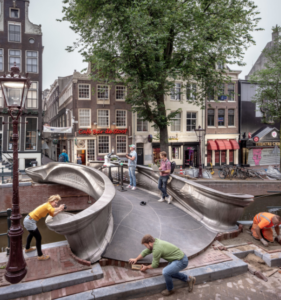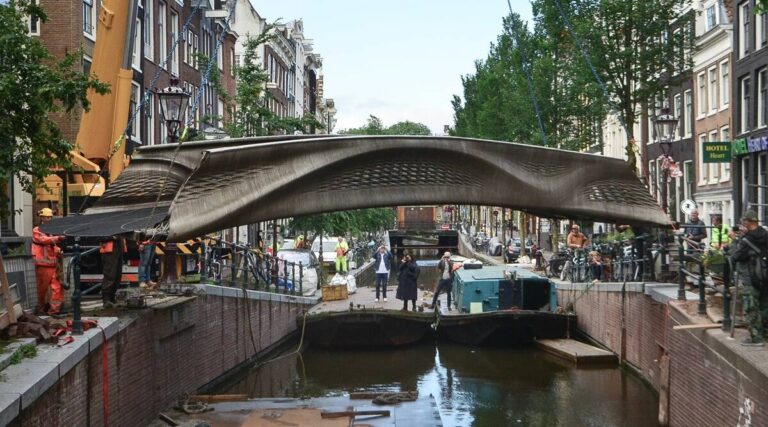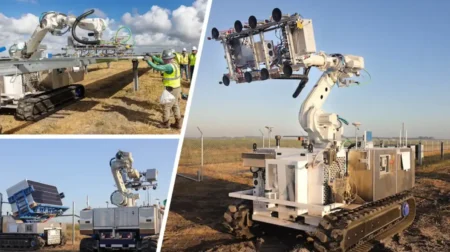A digital twin of the world’s first 3D-printed steel footbridge will enable engineers to monitor the bridge’s “health” in real time, and understand how the public interacts with 3D-printed infrastructure.
Using a network of installed sensors, Imperial College London researchers will measure, monitor and analyse the performance of the novel 12-metre-long structure as it handles pedestrian traffic.
The data collected, from the bridge in Amsterdam city centre, will enable researchers and engineers to monitor how it changes over its lifespan.
This data from the sensors will be put into a digital twin of the bridge which will imitate the physical bridge with growing accuracy in real time as sensor data come in. The performance and behaviour of the physical bridge will be tested against the twin, which will help answer questions about the long-term behaviour of 3D-printed steel.

Furthermore, the project aims to study its use in real world settings and for future novel construction projects.
The Imperial researchers are part of a wider team of structural engineers, mathematicians, computer scientists and statisticians working on The Alan Turing Institute-Lloyd’s Register Foundation programme in data-centric engineering.
The programme is led by Professor Mark Girolami at The Alan Turing Institute and previously of Imperial’s Department of Mathematics.
Girolami said: “3D printing is poised to become a major technology in engineering, and we need to develop appropriate approaches for testing and monitoring to realise its full potential.
“When we couple 3D printing with digital twin technology, we can then accelerate the infrastructure design process, ensuring that we design optimal and efficient structures with respect to environmental impact, architectural freedom and manufacturing costs.”
The data captured from the bridge will be made available to other researchers worldwide who want to work with the Turing researchers in analysing the data. Now the bridge is unveiled, the researchers will begin collecting data in real time to monitor how it behaves.
The team’s work was predominantly funded by The Alan Turing Institute, with additional funding from the Engineering and Physical Sciences Research Council, part of UK Research and Innovation.








